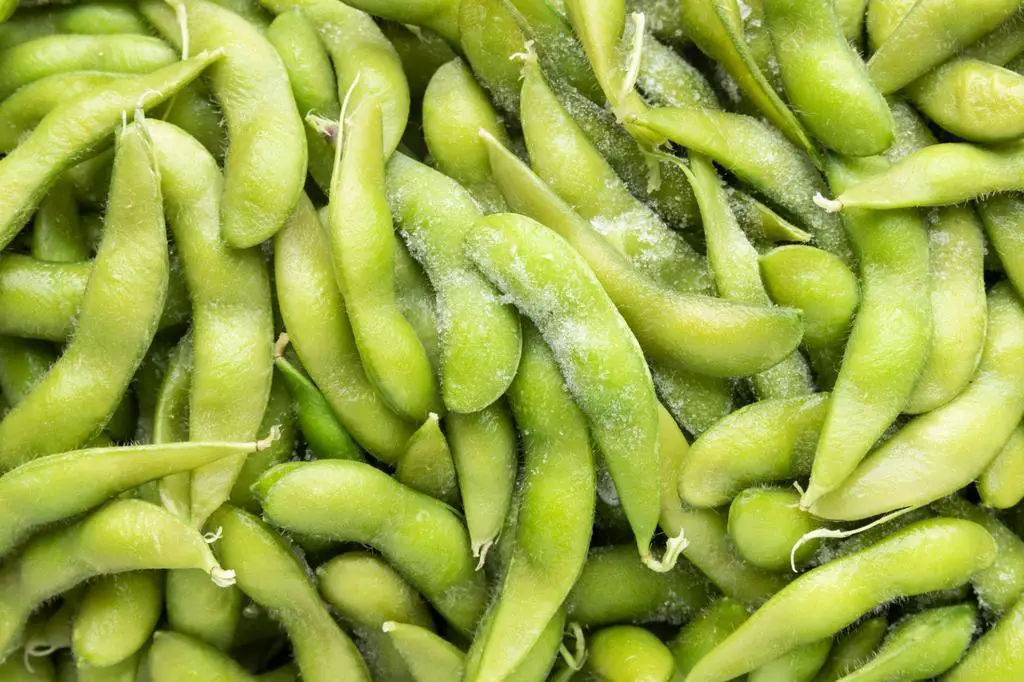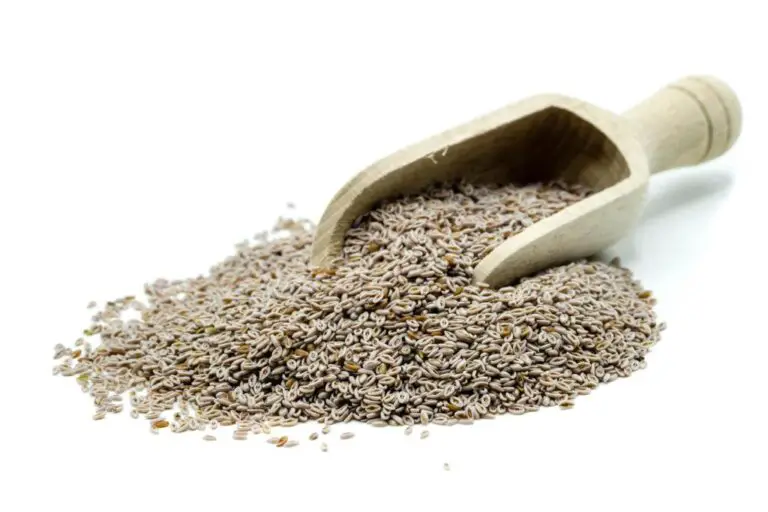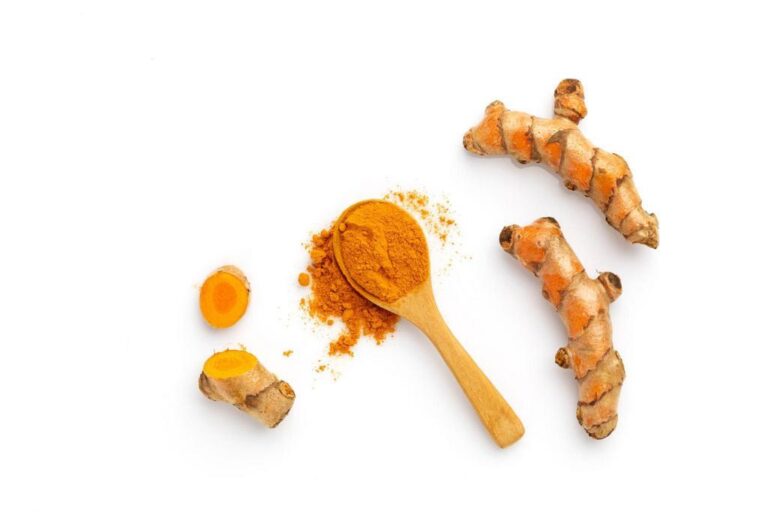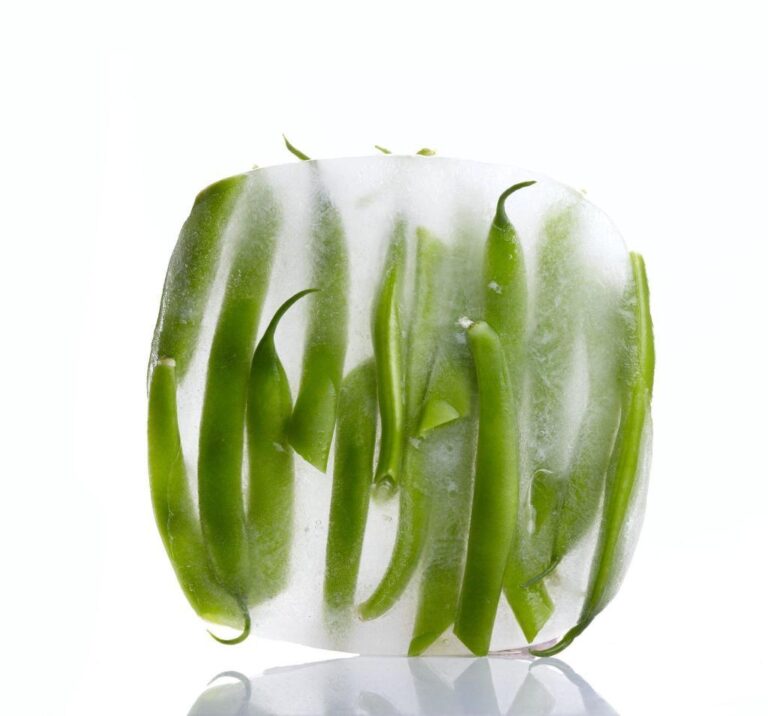Can You Eat Raw Edamame? Do Raw Edamame Need To Be Cooked?

Edamame, which is made from young, tender soybean pods, is a great source of plant-based protein, fiber, and other important nutrients. These green pea pods have become increasingly popular as a healthy snack option and can be found in grocery stores, restaurants, and even some bars. However, there is some confusion about whether raw edamame can be consumed without cooking.
The short answer is no. Raw edamame requires cooking before it is safe to eat. Even though you can eat raw edamame as a snack, you shouldn’t because it could cause digestive problems and make it hard for your body to absorb nutrients. Not only does cooking edamame make it safer, but it also makes it taste, feel, and be more nutritious.
There are many ways to prepare edamame, including boiling, steaming, microwaving, or even roasting. Also, edamame is a versatile food that can be used in salads, stir-fries, and dips, among other things.
In this article, we will dive deeper into the reasons why raw edamame needs to be cooked, the best methods to prepare it, and how to incorporate it into your diet. So, let’s learn more about edamame and its health benefits and ways to use it in cooking.
Understanding Edamame and Their Nutritional Value
Edamame is a popular snack that is often served as an appetizer in Japanese restaurants. But what is edamame? Simply put, edamame is a preparation of immature soybeans that are still in their pods.
These green pods are boiled in salted water until they are tender, and then served as a snack or side dish. Edamame is not only a tasty treat, but it is also an excellent source of nutrition.
Edamame is a great source of protein, fiber, and a wide variety of vitamins and minerals. One cup of edamame contains 17 grams of protein, which is more than you would get from a cup of milk or a large egg. Edamame is also rich in fiber, which is important for digestive health and helps to keep you feeling full and satisfied. Also, edamame is a good source of vitamins and minerals like magnesium, vitamin K, and iron.
One of the unique things about edamame is that it contains a type of plant compound called isoflavones, which have been linked to a variety of health benefits. Isoflavones are known for their anti-inflammatory and anti-oxidant properties, which can help protect against heart disease, cancer, and diabetes, among other chronic diseases. Some studies have also shown that isoflavones may help ease the symptoms of menopause, but more research is needed to confirm this.
Benefits of Eating Edamame
There are many benefits to eating edamame, such as their high protein and fiber content. Edamame is also an excellent source of antioxidants, which help fight off free radicals in the body. These antioxidants can help reduce inflammation in the body and may even reduce the risk of certain types of cancer.
Another benefit of edamame is that it contains antioxidants, which help protect the body against damage from free radicals. Free radicals are unstable molecules that can cause cell damage and contribute to the development of chronic diseases such as cancer and heart disease. Edamame is rich in isoflavones, a type of antioxidant that has been linked to a lower risk of these diseases.
Moreover, edamame is low in calories and carbohydrates, which makes it an excellent snack for those who are watching their weight. Also, the fiber in edamame can make you feel full for longer, which can keep you from eating too much and help you lose weight. This makes edamame an ideal snack for those who want to lose weight or maintain a healthy weight.
You could eat edamame as a snack or as a healthy addition to your meals. It tastes good and is good for you.
Can You Eat Raw Edamame?
Edamame is a popular snack that many people like. The pods are usually cooked in salted water by boiling or steaming them. This may leave you wondering if you can eat edamame raw. The answer is yes; you can eat raw edamame, but it is not recommended. There are some things to keep in mind.
- It’s important to note that edamame pods are not meant to be eaten whole. You should remove the beans from the pod before consuming them. To do this, simply hold the pod between your thumb and forefinger and use your other hand to gently squeeze the beans out of the pod. The beans themselves are perfectly safe to eat raw, but the pods are not.
- While it is safe to eat raw edamame, some people may find the texture and flavor to be less enjoyable than when the beans are cooked. Raw edamame has a crunchy texture and a slightly grassy taste. If you’re not a fan of raw edamame, try steaming or boiling the beans for a few minutes before eating them.
- Lastly, it’s important to ensure that you’re eating fresh, high-quality edamame if you choose to eat it raw. Look for bright green pods that feel plump and firm to the touch. If the pods are yellow or brown, or if they feel mushy, they may not be fresh and should be avoided.
Do Raw Edamame Need To Be Cooked?
The answer is yes, raw edamame needs to be cooked before it can be eaten. While it’s true that some people eat raw edamame as a snack, it’s not recommended. Raw edamame is hard to digest, and it has enzymes that can stop proteins from being absorbed. Cooking the edamame not only makes it easier to digest but also improves its nutritional value.
There are a few ways to cook edamame. The most common method is to boil it in salted water for about 5 minutes, or until the pods are tender. You can also steam or microwave edamame in a covered dish with a little bit of water. Once the edamame is cooked, you can sprinkle it with salt or other seasonings for added flavor.
Are Raw Edamame Poisonous?
There is a common misconception that raw edamame is poisonous. The truth is that raw edamame is not poisonous, but it is not recommended to eat it raw. This is because raw edamame has some natural toxins in it that can cause digestive problems if eaten in large amounts.
Raw edamame contains a naturally occurring toxin called lectin, which is a type of protein that can cause gastrointestinal problems if consumed in large quantities. Many different types of plants contain lectins, which the plant uses to defend itself from pests and other threats.
The human digestive system is not designed to break down large quantities of lectins, which can cause bloating, nausea, and diarrhea.
Furthermore, raw edamame also contains another natural toxin called trypsin inhibitors. Trypsin is an enzyme that helps break down proteins in the human body, and trypsin inhibitors can interfere with the body’s ability to absorb protein properly. Trypsin inhibitors aren’t dangerous in small amounts, but if you eat a lot of them, you may have digestive problems and even be more likely to get pancreatic cancer.
It’s best to cook edamame before eating it so that it doesn’t cause digestive problems or other problems. Boiling or steaming edamame for 5–10 minutes will destroy the natural toxins and make it safe to eat. Cooking edamame can also make it taste and feel better, making it a more enjoyable and filling snack.
Health Risk and Side Effects of Eating Raw Edamame
Even though edamame is a healthy and tasty snack, it’s important to be aware of any risks or side effects that might come from eating it raw. Here are some things to keep in mind:
- As mentioned earlier, raw edamame contains a type of compound called lectins. Lectins are naturally occurring proteins that can bind to certain sugars in the body and potentially cause digestive issues. However, the lectins in edamame are not thought to be harmful in small amounts, and many people eat raw edamame without experiencing any negative effects.
- Secondly, some people may be allergic to soybeans, which are the main ingredient in edamame. Symptoms of a soy allergy can range from mild to severe and may include hives, itching, swelling, difficulty breathing, and anaphylaxis. If you have a known soy allergy, it’s important to avoid edamame altogether.
- You should be aware of the potential risks associated with eating raw or undercooked foods. Raw edamame may be contaminated with harmful bacteria or viruses, which can cause foodborne illnesses such as E. coli or salmonella. To minimize your risk of foodborne illness, it’s recommended that you cook edamame thoroughly before eating it.
How to Safely Consume Raw Edamame
Raw edamame is not poisonous, but eating too much of it can make your stomach hurt. However, if you still want to consume raw edamame, there are some precautions you can take to do it safely. Here are some tips on how to safely consume raw edamame:
- Make sure to buy fresh, high-quality edamame from a reputable source. Look for edamame that is bright green, plump, and free of blemishes or discoloration. Avoid edamame that has a dull or yellowish color, as it may be old or spoiled.
- Rinse the edamame thoroughly under cold water before consuming it. This will remove any dirt, debris, or bacteria that may be present on the surface of the beans. You can also soak the edamame in cold water for a few minutes before rinsing it to ensure that it is clean.
- Limit your consumption of raw edamame to a small serving size. Eating a handful of edamame as a snack or adding a few beans to a salad is safe and can provide numerous health benefits. However, consuming large quantities of raw edamame can lead to digestive issues and other health problems.
Raw Edamame vs. Roasted Edamame: Which One is Better?
Edamame is a popular snack that can be enjoyed in a variety of ways, including raw and roasted. But which one is better?
When it comes to nutritional value, raw edamame is the winner. Raw edamame is a great source of protein, fiber, and important vitamins and minerals like folate, vitamin K, and iron. Due to the breakdown of some vitamins and minerals by heat, the roasting process can reduce these nutrients.
However, roasted edamame can still be a healthy snack, and it’s a good option for those who prefer a crunchy texture and a more savory flavor.
Roasted edamame also has a longer shelf life than raw edamame, making it a convenient snack to keep on hand. Roasting helps get rid of some of the edamame’s extra water, which can help keep it from going bad and extend its shelf life. Raw edamame, on the other hand, should be eaten within a few days of being bought and kept in the fridge to keep it from going bad.
In terms of taste and texture, it really comes down to personal preference. Raw edamame tastes a little bit sweet and nutty, and its texture is soft and tender. Roasted edamame has a more savory flavor, a crunchy texture, and a slightly roasted taste. Both options can be seasoned with spices or sauces to enhance their flavor.
Why Are Edamame Pods Not Edible?
In the past few years, edamame pods have become more popular as a healthy snack or appetizer. However, many people are still unsure about whether or not the pods are edible. While the beans inside are a tasty and nutritious treat, the pods themselves are not meant to be eaten.
The reason for this is mainly due to the texture of the pods. Unlike other types of bean pods, such as snap peas or green beans, edamame pods are tough and fibrous. This makes them difficult to chew and swallow, and they can be quite challenging to digest. While some people may enjoy the flavor of the pods, their texture can be a major deterrent.
In addition to being tough and fibrous, pods are edamame parts that also contain a natural toxin called phytohemagglutinin. If you eat a lot of this toxin, it can make your stomach upset, and there is a lot of it in the pods. While cooking the pods can help break down the toxin, they still remain tough and fibrous, making them unsuitable for consumption.
How Many Raw Edamame Should You Eat in a Day?
Edamame is a nutritious and tasty snack that is high in protein, fiber, and essential vitamins and minerals. But you should only eat a small amount of edamame at a time because eating too much of it can hurt your health.
So, how many raw edamame should you eat in a day? The answer depends on things like your age, gender, weight, and level of activity, among other things.
In general, it is safe to consume up to 1-2 cups of edamame per day, depending on your calorie needs. This translates to roughly 100–200 grams of edamame, or about 1-2 servings. A serving size of edamame is about 1/2 cup, or 75 grams, and provides around 100 calories, 8 grams of protein, and 4 grams of fiber.
It is also important to consider the way you are consuming edamame. If you are eating cooked edamame, you can consume more than if you are eating raw edamame, as cooking helps to break down the natural toxins in the beans. If you are eating raw edamame, it is best to limit your consumption to a smaller serving size, such as a handful.
In addition to the amount of edamame you consume, it is important to also consider the rest of your diet and your overall health goals. Consuming a variety of nutrient-dense foods, and balancing your macronutrient intake, is essential for optimal health. If you have any concerns about how much edamame you should be consuming, it is best to consult with a healthcare professional or registered dietitian.
How to Incorporate Raw Edamame into Your Diet
You can easily add edamame to your diet because it is a healthy and tasty snack. Here are some ways to enjoy raw edamame:
- In salads: Add raw edamame to your favorite salad for an extra boost of protein and fiber. You can also mix it with other veggies like cucumbers, cherry tomatoes, and bell peppers for a colorful and nutritious salad.
- As a snack: Raw edamame makes a great snack on its own or paired with other foods like cheese or fruit. It’s also a great option for on-the-go snacking, as it requires no preparation and is easy to transport.
- In stir-fries: Add raw edamame to your favorite stir-fry recipe for a nutritious and satisfying meal. Edamame pairs well with other stir-fry staples like bell peppers, onions, and carrots.
- In dips: Blend raw edamame with other ingredients like garlic, lemon juice, and tahini to make a flavorful and nutritious dip. This can be enjoyed with veggies, crackers, or pita bread.
- In sushi rolls: Raw edamame can also be used as a filling for sushi rolls, along with other ingredients like raw avocado, cucumber, and carrot. This makes for a delicious and healthy sushi roll option.
Incorporating raw edamame into your diet is a great way to add variety and nutrition to your meals and snacks. With its mild and nutty flavor, it’s a versatile ingredient that can be used in a variety of dishes. Whether you enjoy it as a snack or as part of a meal, raw edamame is a great way to support a healthy and balanced diet.






